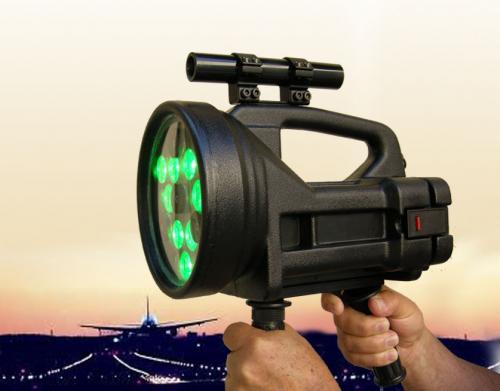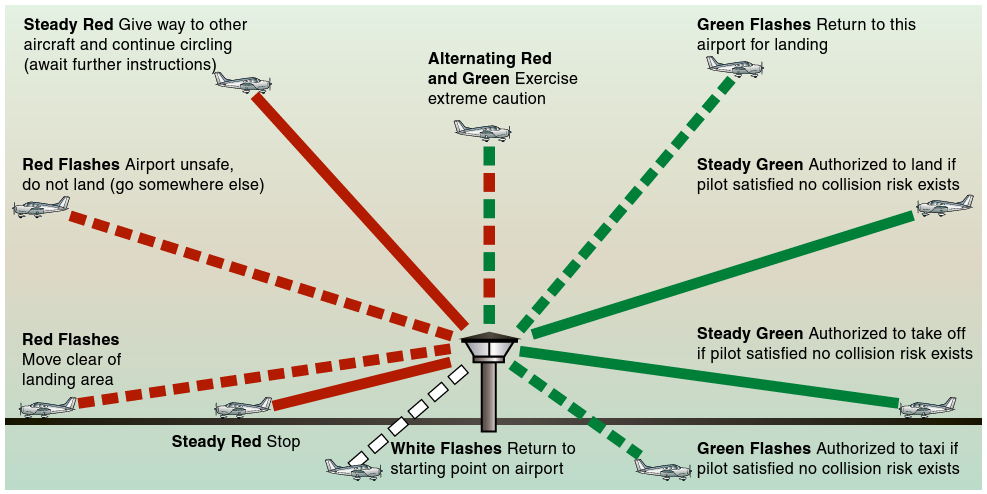A while back I was on a local area pleasure flight with a couple of friends showing off the sights in the club’s Piper Cherokee. I was so wrapped up in making sure my passengers were having a good time that I failed to immediately notice the illuminated low voltage light. By the time I did notice, my alternator had already completely failed and I was working with about 20 minutes of remaining battery. Lucky for me at the time I was operating on a VFR flight plan in uncontrolled airspace on a beautiful sunny day. The failure in itself did not present any sort of emergency situation but I knew I would soon lose all electrical power, including my radios and would be unable to communicate with air traffic control (ATC).
My home airport was about a 25 minute flight away and located in Class D airspace, meaning in a normal situation I would need to establish two-way radio communication prior to entering into the airspace and further clearance to land from the control tower. However, I knew with every click of the radio I would be draining the battery of precious power and more than likely have no battery left by the time I got near the airport. After running through the checklists and reducing the electrical load by switching off all non-essential equipment, I tuned in the control tower frequency for the class D airport. My goal at this point was to make a quick radio call to the tower advising them of my impending communications failure, intentions, and current position. Unfortunately for me I was in a bit of a mountainous area and still a little too far out that I was not able to hear any response back from the tower, so I was unsure if they had received my transmission or not. This still was not that big of a concern for me since I knew there were communication procedures in place for situations just like this one.
In the event of a radio communications failure, ATC towers have set procedures to communicate with aircraft via light gun signals. Every operating control tower is outfitted with hand held light guns like the one pictured that emit, Red, Green, and White Light.
After my failure to establish radio communication with the tower, I dialed 7600 into the transponder, which is the squawk code for communications failure. Keeping in mind that when my battery finally did die, my transponder would as well, the squawk code would disappear from ATC radar, and I would just appear as a blip on the screen. About 10 miles out from the airport I went to call tower again and sure enough lost battery power mid transmission. I was close enough to the airport now that I figured someone in the tower probably saw my 7600 squawk and knew I had a communications failure, but I still needed to be extremely cautious and aware of other traffic in the airspace and traffic pattern. I bee-lined it directly for the airport at an altitude of 2,500 ft MSL which was about 1,000 ft above traffic pattern altitude (TPA). My goal here was to overfly the airport looking for other aircraft in the traffic pattern so I could safely descend to TPA and enter into the pattern. Upon overflying the airport I noticed a bright green light emitting from the control tower window. Now remember those aforementioned light gun signals a paragraph earlier? The steady green light is visual communication for cleared to land. Tower must have either noticed my squawk code or put two and two together that some random aircraft was in their airspace without prior clearance and is one, either an idiot or two, more than likely has a communication failure. Without further incident I was able to safely land, receiving another steady green light while on final approach. Once taxing clear of the runway I looked back behind me at the tower and received a flashing green light which is the visual light cue for cleared to taxi.
There is a whole set of Airport Traffic Control Tower Light Gun Signals that you should become familiar with and know by memory. You can find all of these signals and procedures outlined in the AIM Section 4-3-13. I have also included a visual image for each of the light gun signals below.
After parking and securing the aircraft I gave tower a quick phone call to make sure everything was good. They gave me the A-OK and said they had received the first transmission I made when still 30 miles out, so they had been expecting my arrival and tracked my 7600 squawk code up until I lost power. All in all everything worked out fine that day, other than our scenic flight being cut a bit short—but oh well, saved me a few bucks on the rental fee.
Light gun signals are something that you should know by memory; radio communication failures are not as rare as you might think they are. I have had two in my 15 years of flying. The second of which was a similar circumstance to the first, however that time ATC tower was not exactly on their A-game. After overflying the airport for about 5 minutes and entering the traffic pattern I never received any sort of visual light signal from the tower. I ended up landing, taxing, and parking without ever getting any clearance. I was starting to think their light gun was broken. After I parked and secured the aircraft, I called tower to see what was up. Turns out it was a slow day at the airport and no one in the tower ever even noticed me in the pattern or landing for that matter! I taxied to parking none-the-wiser to the controller’s. It’s not really advisable to land without clearance but sometimes everything doesn’t work out the way it should and you must adapt to the circumstances you are dealt with.
You have the light gun signals memorized yet? Time to find out!
1. A steady red light from the tower, for an aircraft on the ground indicates
A—Give way to other aircraft and continue circling.
B—Stop.
C—Taxi clear of the runway in use.
2. A flashing white light signal from the control tower to a taxiing aircraft is an indication to
A—taxi at a faster speed.
B—taxi only on taxiways and not cross runways.
C—return to the starting point on the airport
3. An alternating red and green light signal directed from the control tower to an aircraft in flight is a signal to
A—hold position.
B—exercise extreme caution.
C—not land; the airport is unsafe.
Answers posted in the comments section.






